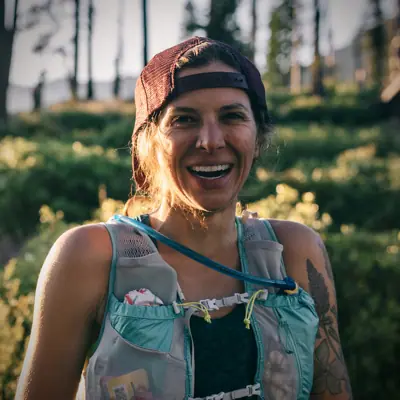It’s an ask made on the start line of many trail races: If you see someone in trouble, stop to help.
This year, on the rugged backcountry trails of the 2025 Speedgoat 50k, a group of racers showed that caring for each other came before race results when they happened upon another runner lying motionless on the ground. It’s a nightmare scenario no one wishes to encounter — on or off a race course — but in this case, everyone involved quickly realized that their own races were now of secondary importance and helping the fallen runner was their top priority. One of the runners, Majell Backhausen, applied his wilderness first aid training to check for responsiveness and assess the runner’s possible injuries. After a few long seconds, the injured runner, Scott Klingonsmith, responded by lightly squeezing Backhausen’s hand. While others ran ahead to the next aid station to get help, Backhausen stayed with Klingonsmith, sacrificing any race goals for the day.
While his evacuation was slow, Klingonsmith was eventually able to walk out, assisted by the race’s medical crew. The stories from that day provide hope that when things get serious, people are more than willing to put their personal goals aside in order to help others.
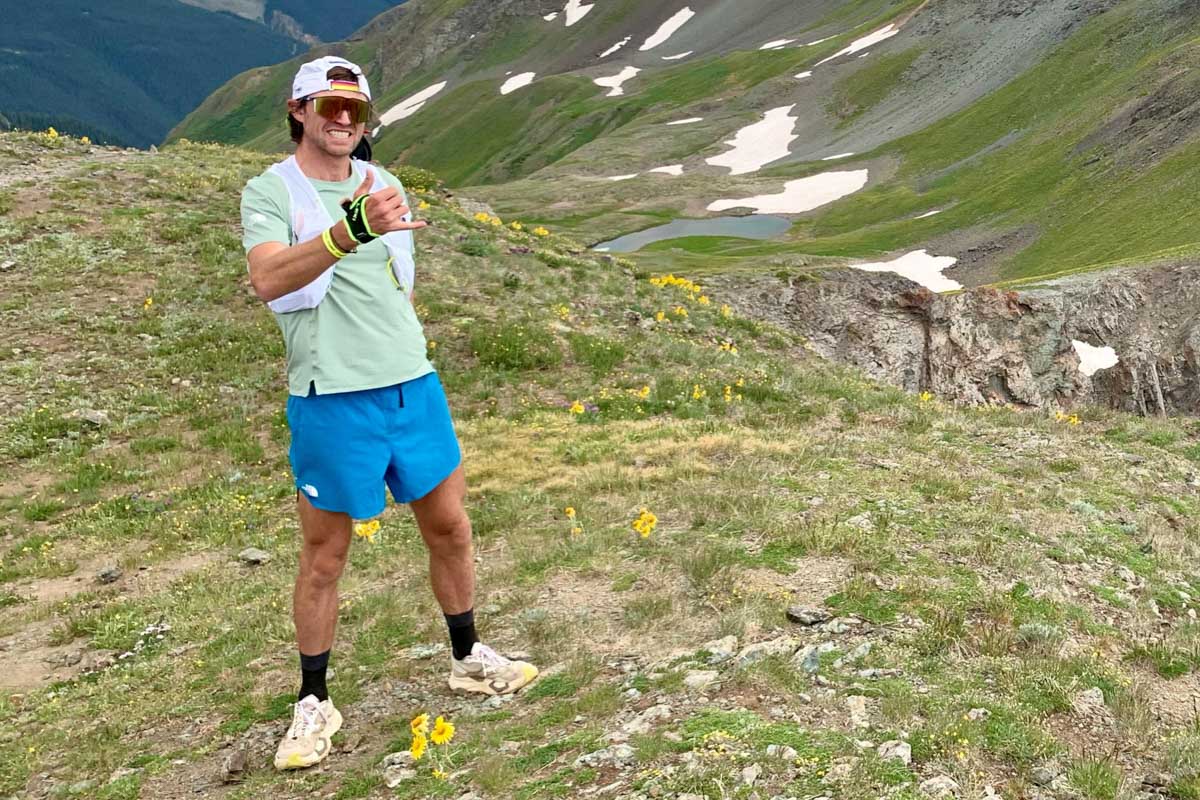
Majell Backhausen, a man of the mountains, used his wilderness first aid training to help a hurt runner, sacrificing his own race ambitions at the 2025 Speedgoat 50k. Photo courtesy of Majell Backhausen.
A Fall on the Speedgoat 50k Trails
The Speedgoat 50k takes place in Utah’s Wasatch Mountains in late July. Over two days, the event hosts three races that start and finish at Snowbird in Little Cottonwood Canyon, approximately 30 miles from downtown Salt Lake City. Sunday’s 50k premier event, which was started in 2008 by ultrarunning legend Karl Meltzer, is known for its more than 11,000 feet of vertical gain over 31 miles and is advertised as the toughest 50k in the U.S.
About 14 miles into the race, Backhausen was descending from Hidden Peak on a rock-strewn trail. “The race was feeling tough on the first climb, but that’s Speedgoat, I guess, and I had found some more rhythm descending a very technical section of the course in its first major downhill,” recalls Backhausen. “Myself and a number of other runners were in close proximity descending this section, and the next moment, we just saw Scott lying on the ground, motionless.”
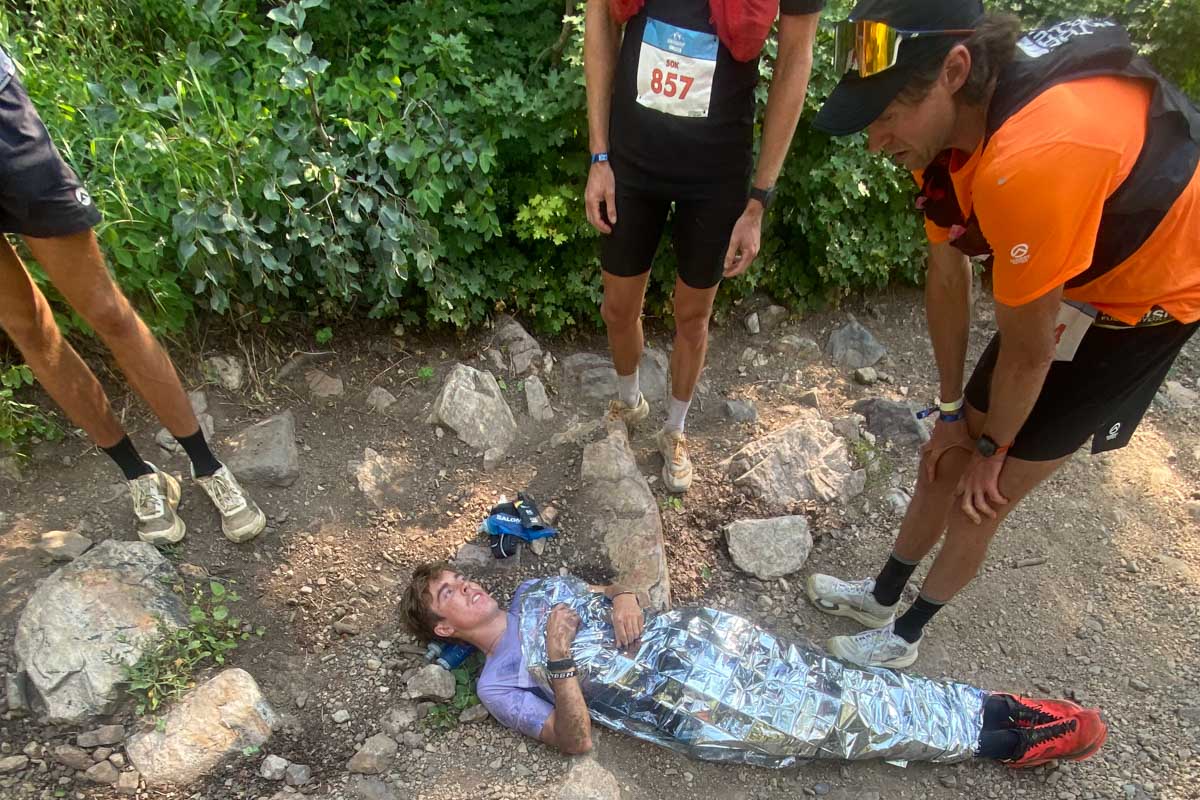
Scott Klingonsmith wrapped in an emergency blanket while Majell Backhausen (orange shirt) manages the situation. Photo courtesy of Scott Klingonsmith.
Backhausen said the group stopped to check on the unconscious runner, and to his relief, Klingonsmith stirred after a few moments. “The second big relief came when he slowly pressed pause on his watch,” Backhausen shared. “Like a true racer.”
Both Backhausen and Klingonsmith are competitive athletes and experienced trail runners. Backhausen is an athlete for the Australia/New Zealand The North Face team and has been trail running and ultrarunning since 2012. He’s completed several 100 milers and notable races such as UTMB, the World Mountain and Trail Running Championships, Marathon des Sables, and the Skyrunning World Championships. Klingonsmith is 20 years old and started running four years ago as a high school cross-country and track athlete and had goals of finishing in the top 10 at Speedgoat. “Before my fall, I was doing well,” said Klingonsmith. “My fueling plan was going perfectly, and I was in a good place as we were about halfway into the race. I was excited to see what my body could rally in the second half of the race.”
The Fall, Rescue, and Priorities
Klingonsmith recalls running downhill fast, trying to make up ground on the runners ahead of him, when he fell: “I was in a good rhythm until my toe snagged on a rock and I fell hard on a rocky part of the trail. My knees took 90% of the weight of my fall as I landed on some sharp rocks … I remember falling and closing my eyes after I came to a stop. I was lying down in the middle of the trail. From that point, I don’t remember much except that I started to gain consciousness when Majell came down the trail and had me squeeze his finger. I remember he kept feeding me the Precision gel I was carrying, as well as some of my liquid carbs.”
Unfortunately, the competition came to a halt for both athletes, although Backhausen did eventually go on to finish the race. “As the seconds ticked by and [Scott’s] movement and awareness were slow but evident, it occurred to me that any sort of racing was well and truly finished for the day,” said Backhausen. “I think it was tough for us both to accept, but ultimately, I had to believe the words I told Scott, which were: ‘This is a blip on the radar of life, man; there will be many more opportunities to race and don’t sweat it. There are bigger things in life.’” For the next 40 minutes, Backhausen stayed with Klingonsmith as he slowly recovered and waited for medical attention.
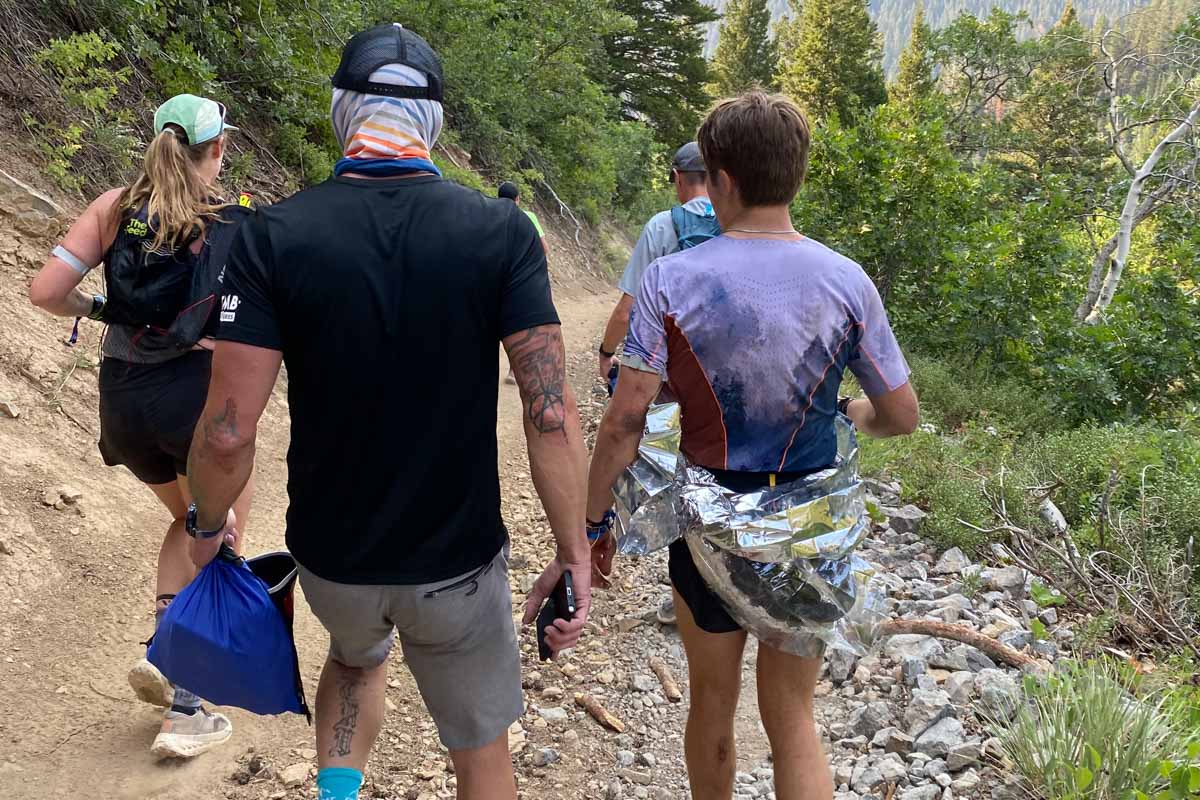
Scott Klingonsmith was eventually able to walk out with assistance from the race medical crew. Photo courtesy of Scott Klingonsmith.
Meanwhile, about a mile and a half down the trail at the American Fork Canyon aid station, Ryan Cooper, part of the event’s operations team with medical training, started organizing a rescue as soon as he received reports of an injured runner. Cooper shared, “It’s a remote area between Snowbird and Midway, and takes two to three hours to get there on a gnarly, boulder-ridden 4×4 road.” He noted, “It’s not a good place to get hurt.”
As Cooper was making his way up the trail with medical supplies, Backhausen and Klingonsmith, wrapped in an emergency blanket and with lacerations on his hands and legs, were slowly walking down. Cooper noted that he showed some signs of shock, but he was coherent and able to walk and talk. The group got Klingonsmith to the aid station, where he rested and hydrated while Cooper cleaned and bandaged his cuts. “He said he was able to hike out,” said Cooper, and Klingonsmith made it to the medical tent at the finish line by the time Backhausen ran the second half of the course and finished the race.
The Selflessness of Trail Runners
Since the incident, Klingonsmith has almost fully recovered. “I had a deep puncture wound on my left knee that required stitches, my right knee was swollen to the size of a grapefruit, but luckily had no internal fracture, my finger was broken, and my hands had a lot of cuts and scrapes,” Klingonsmith shared. Fortunately, he did not sustain a head injury. “Perhaps I had the wind knocked out of me,” he said. He is now running again — mostly pain-free — and he recently returned to racing by taking third at the 2025 Big Cottonwood Classic, a local race.
Backhausen went on to compete at the 2025 TDS in August, part of the UTMB Mont Blanc festival.
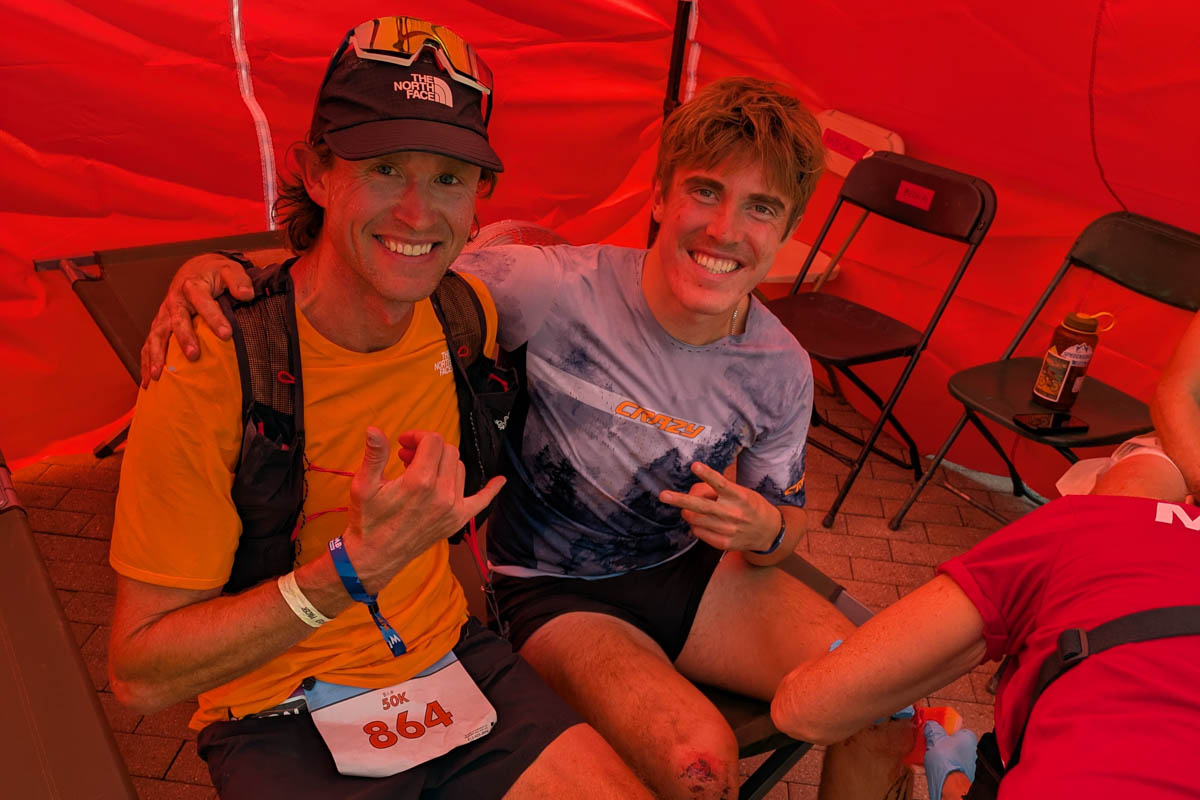
Majell Backhausen and Scott Klingonsmith reunite in the medical tent at the end of the 2025 Speedgoat 50k. Photo courtesy of Scott Klingonsmith.
The two runners have kept in touch over social media. “We both got a new Instagram follower out of it, so I guess that is huge success in this sport,” said Backhausen with a laugh. “I’ll be watching his profile for the next race celebration.”
Klingonsmith shared, “I have learned so many lessons from my experience at Speedgoat. The main one being that there are good people out there who are willing to stop what they’re doing and prioritize someone in need over themselves. I’ve learned that the trail running community has some of the most selfless people I’ve ever met. Every runner who ran down that trail as I was lying down in pain was willing to stop and help. Training months and months for a race only to throw it out the window to help a random person who fell, that’s a true act of selflessness and kindness. I experienced an immense amount of gratitude that day, for everyone who was involved.”
Call for Comments
- Have you ever encountered an injured runner on the trail who needed help or been in a situation where you needed assistance on the trail?
